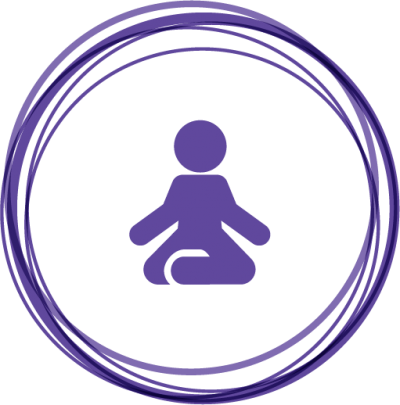January 21, 2020
Nurture Your Mind, Body and Spirit with the Eight Dimensions of Wellness
When thinking about health, we hear the word “wellness” often – but what does wellness really mean, and how can we know if we are truly well?
Wellness is a broad concept, and each individual’s path to wellness will be different, so it’s important to look at wellness holistically and seek balance. The Substance Abuse and Mental Health Services Administration (SAMHSA) has identified eight dimensions of wellness to focus on to optimize health. The eight dimensions include: emotional, spiritual, intellectual, physical, environmental, financial, occupational, and social.
Each of these dimensions of wellness can affect overall quality of life. The eight dimensions of wellness take into account not only an individual’s physical health, but all the factors that contribute to a person’s overall wellness. Categorizing wellness into these dimensions helps individuals better understand their thoughts, needs and emotions, particularly among people living with behavioral health conditions, and also allows us to work toward healthier and happier lives.
Read on to learn about each of the eight dimensions of wellness, and how you can nurture each of these areas in your own life:
Emotional wellness represents the ability to cope effectively with life and build satisfying relationships with others. Listening to music, cooking a meal that you enjoy, playing with a pet, watching a favorite movie or TV show, or pursuing an activity that grounds you are all healthy ways to process your emotions.
Spiritual wellness represents your values and belief system, which helps you find meaning and purpose in your life. Spiritual wellness can be recognized however you choose, whether in a group or alone. Prioritize your spiritual wellness through volunteering, self-reflection, meditation, journaling, prayer, spending time in nature or doing activities that inspire you.
Intellectual wellness allows you to seek out ways to be creative and use your knowledge and skills. To keep your mind sharp, consider reading and/or joining a book club, doing puzzles and/or playing challenging games, learning a new language or musical instrument, listening to an educational lecture or podcast, or trying a new hobby.
Physical wellness is made up of a variety of factors, including physical activity, healthy nutrition, and adequate sleep. Physical wellness can be maintained through a healthy diet, a consistent good night’s sleep, as well as regular physical activity. Physical wellness is also improved by avoiding behavioral that is harmful to your body, such as excessive drinking or smoking.
Environmental wellness is connected to the space you inhabit – your home and regular surroundings. You can ensure you feel healthy and safe in your environment by reducing clutter, keeping things organized and clean, and creating the space within the home for things that are important to you. You can also take up gardening, or decorating your space to fit your personal style.
Financial wellness is a feeling of satisfaction about your financial situation. This can look different for everyone, but a good place to start with your financial wellness is creating and maintaining a household budget. If you’re able, save some of your income in a savings account by tracking and evaluating your spending and cutting back on unnecessary expenses. If you don’t feel you know how to properly manage your finances, reach out to your support system for advice or consider taking a class or seminar on money management.
Occupational wellness is a sense of satisfaction with your choice of work. This could include pursuing a career you find fulfilling, whether it be a full time job, part time job or volunteer position. Occupational wellness could also involve spending time on a hobby that gives you a sense of accomplishment. If you find you feel a lack of satisfaction in your occupation, seek out support from others close to you and be sure to engage in recreational activities that can help balance out work stress.
Social wellness is a sense of connectedness and belonging. Spending time with friends and family, bonding with colleagues, or joining a club or organization are great ways to nurture our social wellness. If you’re feeling alone or isolated, consider trying new things and becoming involved with community activities that allow you to meet new people and make genuine connections.
Establishing new, improved habits that support our wellness goals and values can be challenging, but is a crucial component in living a self-directed, healthy and connected life. Taking the necessary time and energy to developing healthier routines and habits in our lives can have incredible benefits, both mentally and physically.
Cascadia’s Wellness Program, which includes a variety of workshops, activities and events open to the public, is based off of SAMHSA’a eight dimensions of wellness. Learn more about how you can improve wellness through Cascadia’s Wellness Program here.









